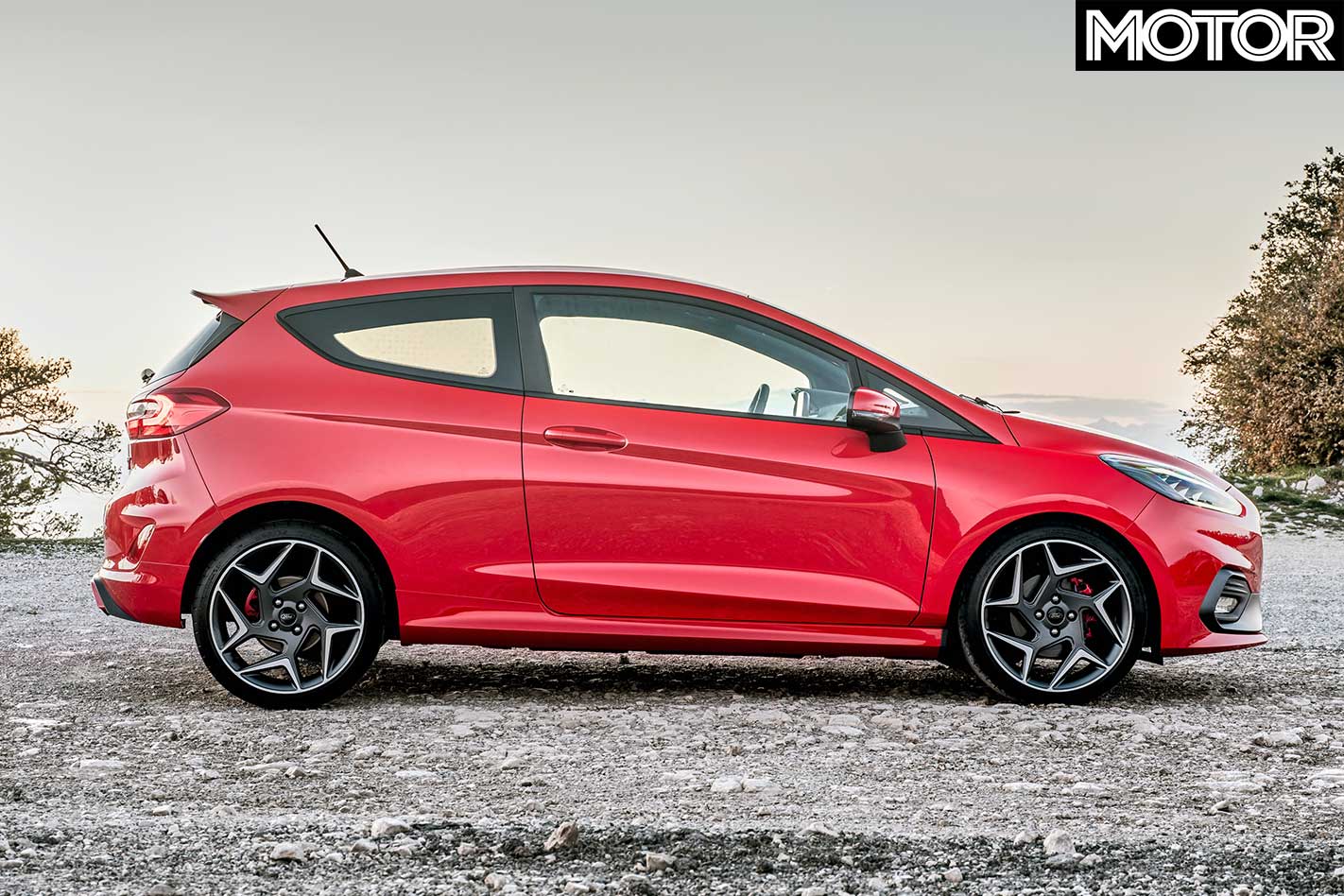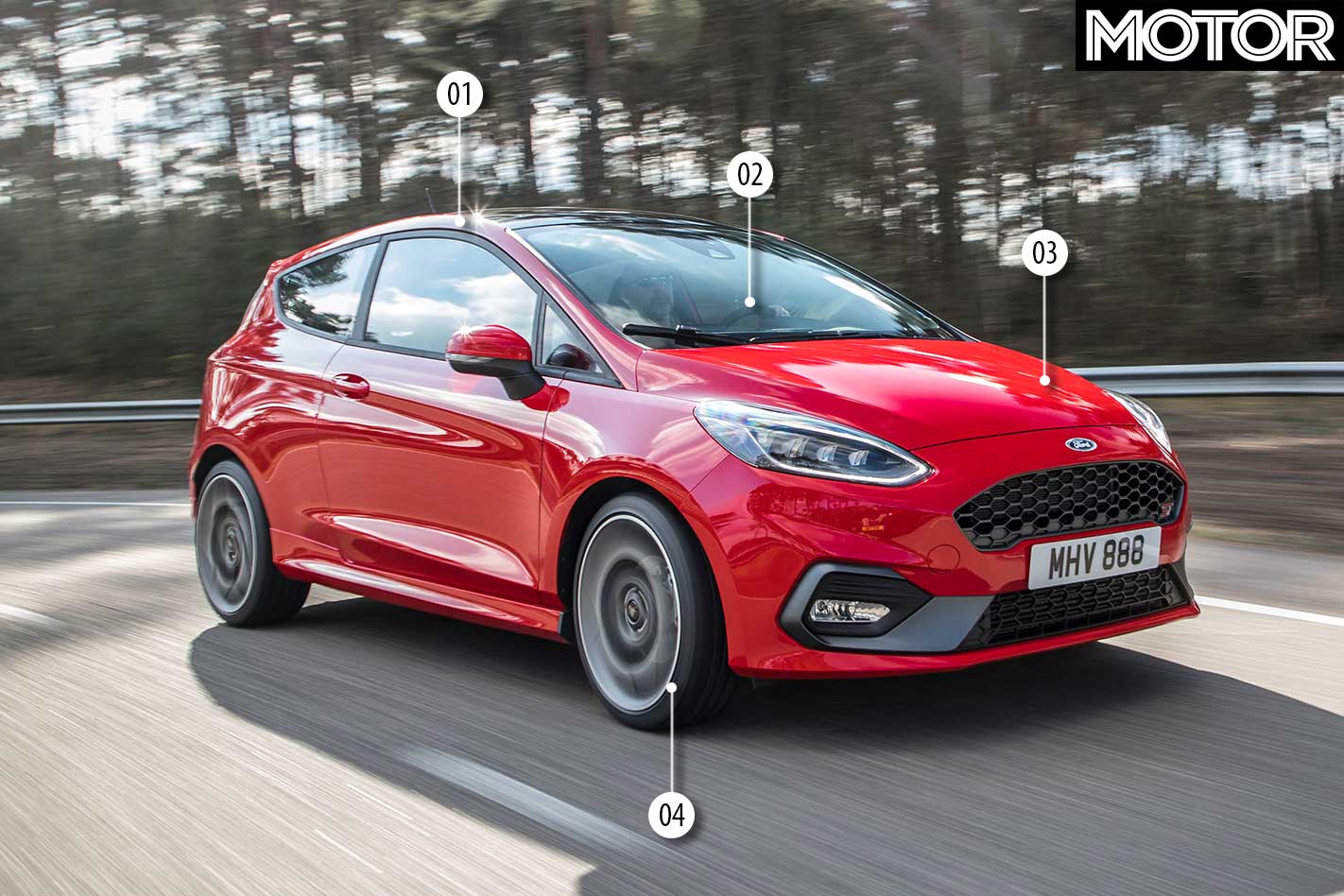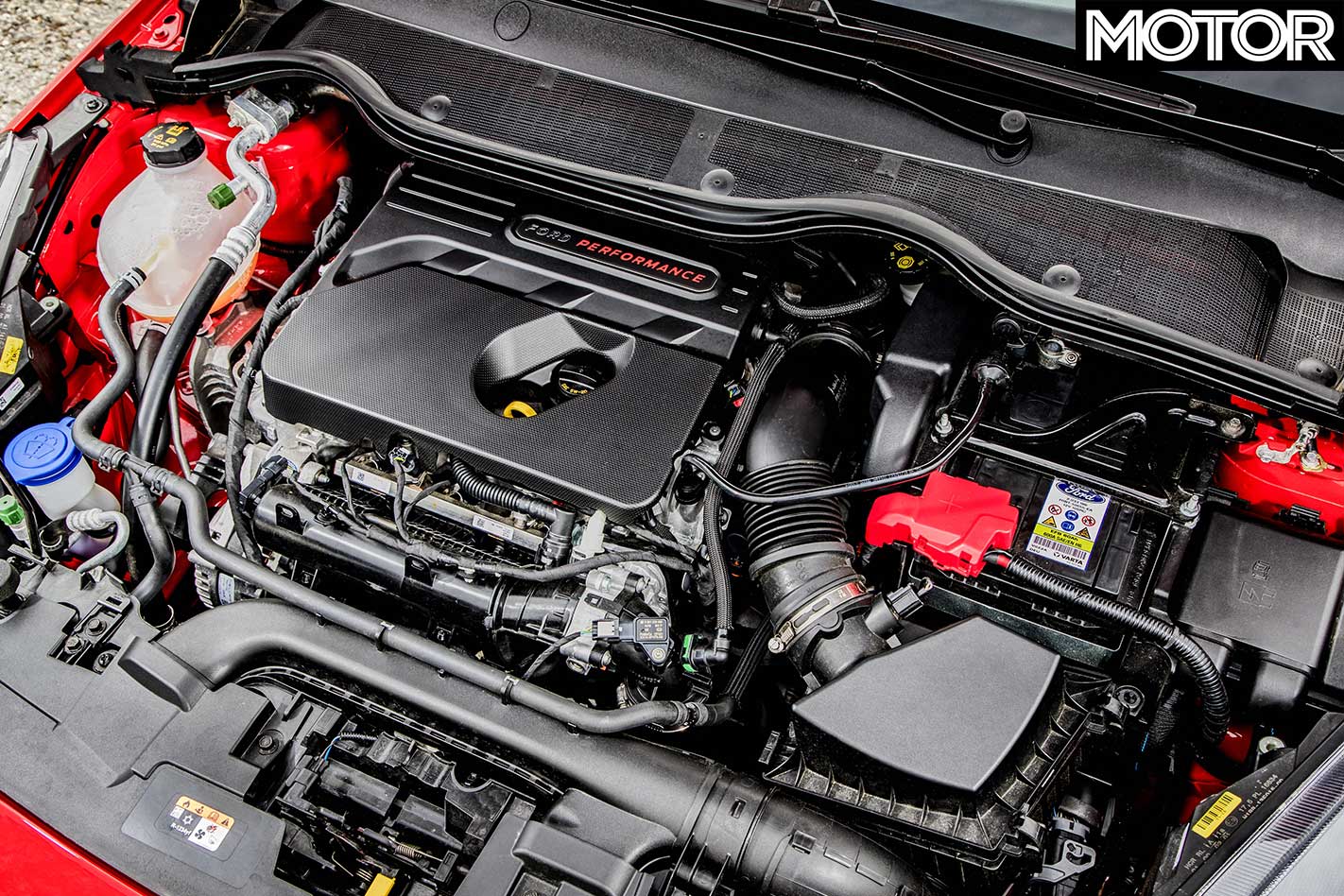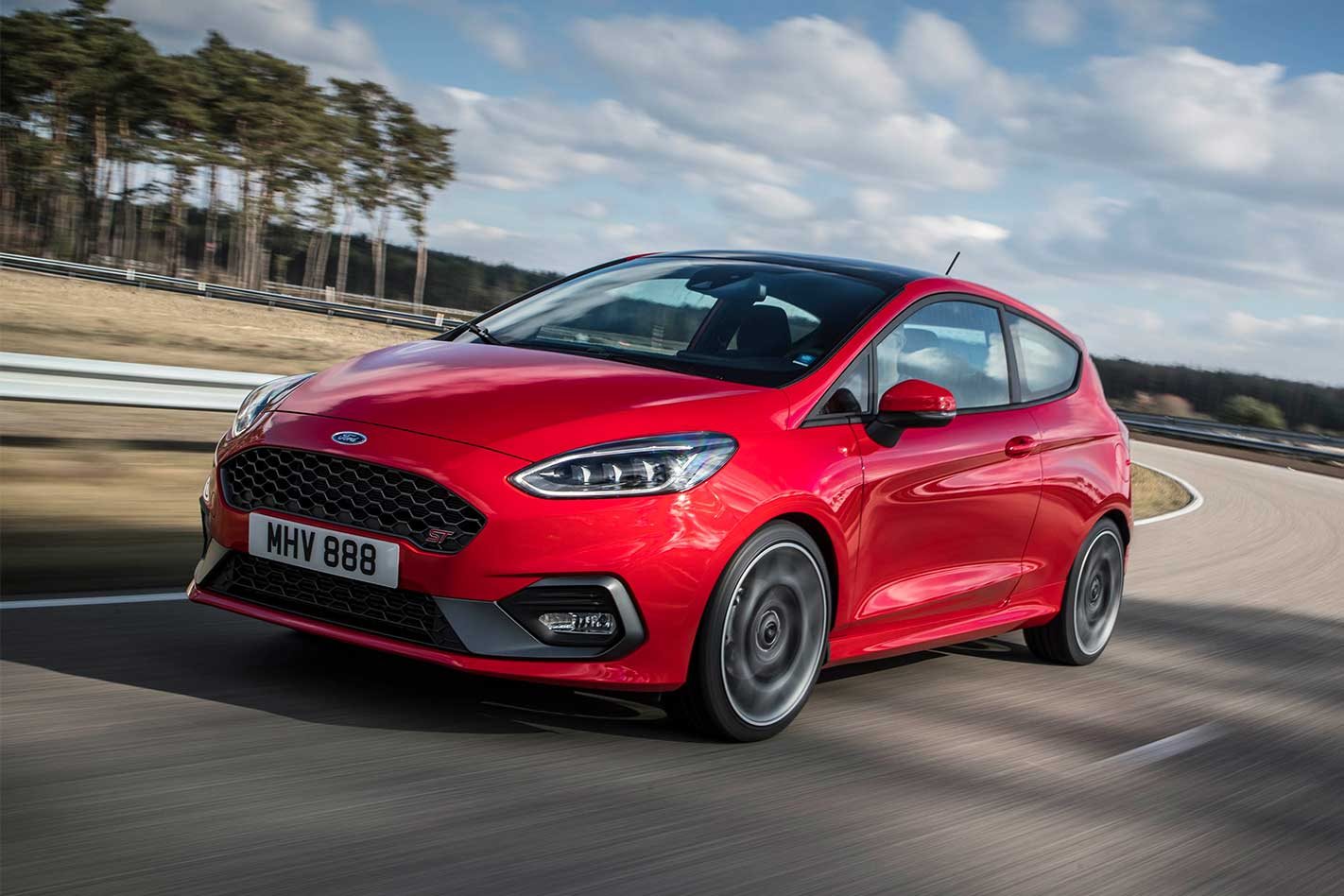The Ford Fiesta ST has been one of MOTOR’s Bang For Your Buck heroes, and even though all good things must come to an end, a new, more sophisticated successor will be making its way Down Under.
So it’s time to dig a little deeper to find out what the new Ford Fiesta ST is all about. It’s a car that’s had heavy involvement from the Ford Performance division to make sure it maintains its high esteem among the hot-hatch fraternity.

First off, the ST gets a proper mechanical LSD – a Quaife unit that will likely be standard in Oz. The mechanical system limits torque to the wheel with reduced grip, therefore limiting wheelspin and pulling the ST out of tight bends, fully exploiting the three-pot’s newfound extra grunt.
The LSD is designed to work in conjunction with the enhanced torque-vectoring tech which, like any other system, electronically applies brake pressure to the inside front wheel if it detects slip, reducing understeer at the same time. Ford Performance has worked hard to make the mechanical LSD and electronic torque vectoring work in harmony.
Ford-patented force-vectoring springs bolster stability (and improve ride quality), roadholding and responsiveness of the new twist-beam rear suspension. Essentially it keeps the feel and fun-to-drive experience of old with sharp turn-in and keen direction changes, but adds in needed compliance. It’s also 10kg lighter compared to a Watt’s link setup.

A first for a compact hot hatch, the ST also uses non-uniform, non-interchangeable, directionally wound springs. The idea behind it is that they apply vectoring forces to the rear suspension, which in turn enable cornering forces to go directly into the spring for increased lateral stiffness.
Instead of adaptive dampers, the ST uses sophisticated Tenneco twin-tube front and mono-tube rear dampers with RC1 valve technology, resulting in frequency-dependent damping. Overall body control is increased while high-speed driving refinement is retained.
The company stated that buyers expected ‘big things’ from the new ST. It seems Ford has well and truly delivered.
What’s new?

1 – MORE GADGETS The ST will be available with Lane Keeping Aid, Lane Keeping Alert, cruise control, rain-sensing wipers, auto headlights (auto high beam with traffic sign recognition) as well as Recaro seats and SYNC 3 with an optional 8.0-inch screen.
2 – STEERING A bespoke steering knuckle design with a unique EPAS calibration features, resulting in the fastest steering ratio of any Ford at 12:1. The electrically assisted rack is also 14 per cent quicker than the previous generation ST’s.
3 – IT HAS LAUNCH CONTROL! Using the electronic stability control, traction control, torque vectoring and torque steer compensation systems to manage power and torque, the new ST rockets to 100km/h in 6.5sec with a side step of the clutch and a flat throttle.
4 – DRIVING MODES Engine mapping, traction control, ESC, active exhaust valve and electronically controlled steering can all be adjusted via the Normal, Sport and Track modes. Traction control and ESC can be limited with ‘wide-slip’ mode or turned off.
Big Tech, Small Package

The ST’s big news is a switch from a 1.6-litre turbocharged four-cylinder to a boosted 1.5-litre triple. Despite the pot drop, power is rated at the same 147kW (6000rpm) the old ST made on overboost. It’s matched with a generous 290Nm of torque from 1600-4000rpm.
It’s an all-new, all-aluminium engine and features turbocharging, high-pressure fuel injection and twin-independent variable cam timing. The integrated exhaust manifold also delivers more torque at a faster pace by minimising the distance the exhaust gases have to travel between the cylinders and turbo.

The active exhaust bumps up the volume on the already unique engine sound to enhance the driving experience.
The smartest tech is cylinder deactivation, which allows the engine to drop to two cylinders at engine speeds up to 4500rpm in just 14 milliseconds. We’ve seen this before, but not on a triple due to noise and vibration issues. It works so well on the ST that most drivers won’t even notice it (or, admittedly, the claimed 6 per cent fuel saving).





